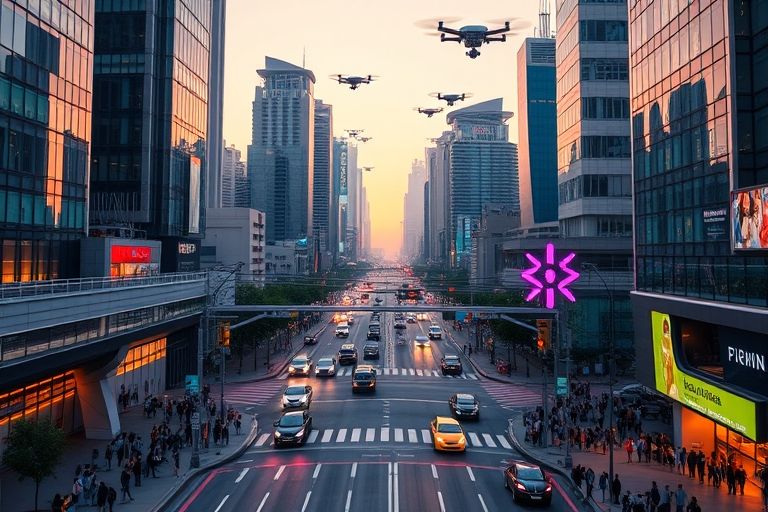
Urban mobility has been a major concern for many years now, and it’s only getting worse. With population growth and urbanization, the number of vehicles on the road is increasing every day, leading to congestion, accidents, and pollution. However, with the evolution of Artificial Intelligence (AI), traffic management has become more efficient and effective in optimizing urban mobility and reducing congestion.
AI algorithms are used in traffic management to analyze and process real-time data from various sources such as traffic cameras, sensors, and GPS devices. This data is then used to optimize traffic flow, reduce congestion, and improve road safety. AI-powered traffic management systems can also predict traffic patterns and adjust traffic signals accordingly to prevent bottlenecks.
One example of AI in traffic management is the use of smart traffic lights. These lights can detect the volume of traffic on different lanes and adjust the timing of the lights accordingly. This helps to reduce waiting times at red lights, leading to faster and smoother traffic flow.
The benefits of AI in traffic management are numerous. Here are some of the most significant ones:
The use of AI in traffic management is still in its early stages, but the results so far are promising. Here are some statistics and facts:
Implementing AI in traffic management requires a collaborative effort between government authorities, private companies, and technology experts. Here are some steps that can be taken:
AI in traffic management is revolutionizing urban mobility by optimizing traffic flow and reducing congestion. The benefits of AI-powered traffic management are numerous, including reduced congestion, improved safety, lower emissions, and cost savings. With the right collaboration and efforts, the implementation of AI-powered traffic management systems can lead to a safer, cleaner, and more efficient urban mobility experience for all.